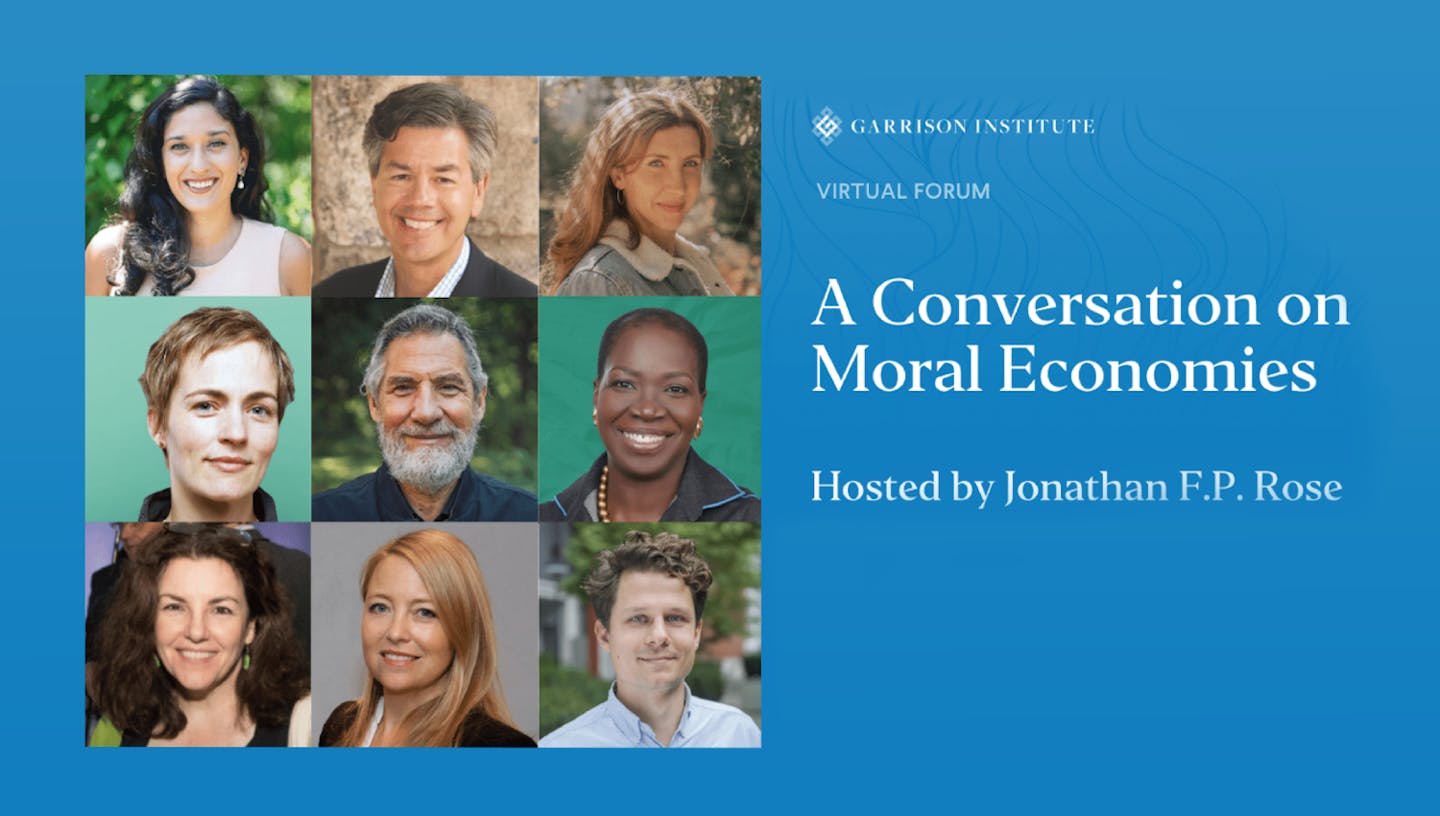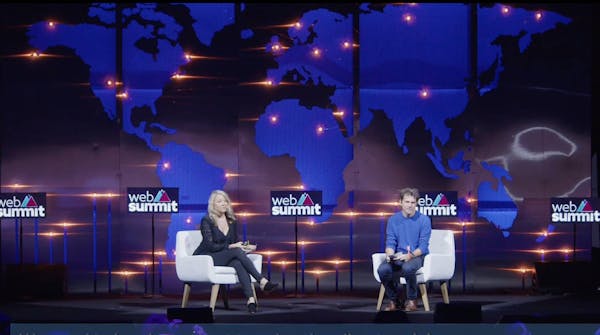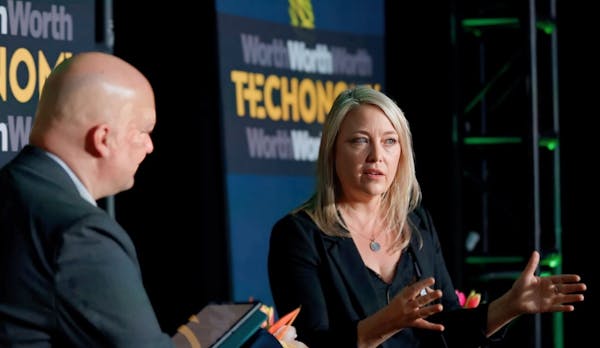One Earth's Justin Winters joins a Conversation on Moral Economies
One Earth's Executive Director and co-founder, Justin Winters, participated in an interactive online forum featuring leaders in moral economics theory. The event was hosted by Jonathan F.P. Rose, co-founder of the Garrison Institute. The Garrison Institute's Moral Economies Project brings together thought leaders to identify common elements among global transformative initiatives, aiming to chart new pathways toward a more just, regenerative, and sustainable future.
Watch the full discussion:
Abridged transcript below.
Introduction and Overview
Thank you so much for having me here today. My name is Justin Winters, and I am the co-founder and Executive Director of One Earth. I’m honored to join this incredible group to share some specific tools, innovations, and approaches we’re bringing to life to facilitate the radical collaboration needed in this moment. Jonathan, thank you for bringing us together—I’m excited to dive into the Q&A after this.
The existential question driving our work at One Earth for nearly a decade has been this: Can we actually solve the twin crises of climate change and biodiversity loss? And if so, how?
Until recently, we lacked scientific models showing whether it was realistically possible to limit global temperature rise to 1.5°C using existing solutions. In 2017, we launched the One Earth Research Program, bringing together over 50 leading scientists and experts across a range of disciplines to answer this critical question.
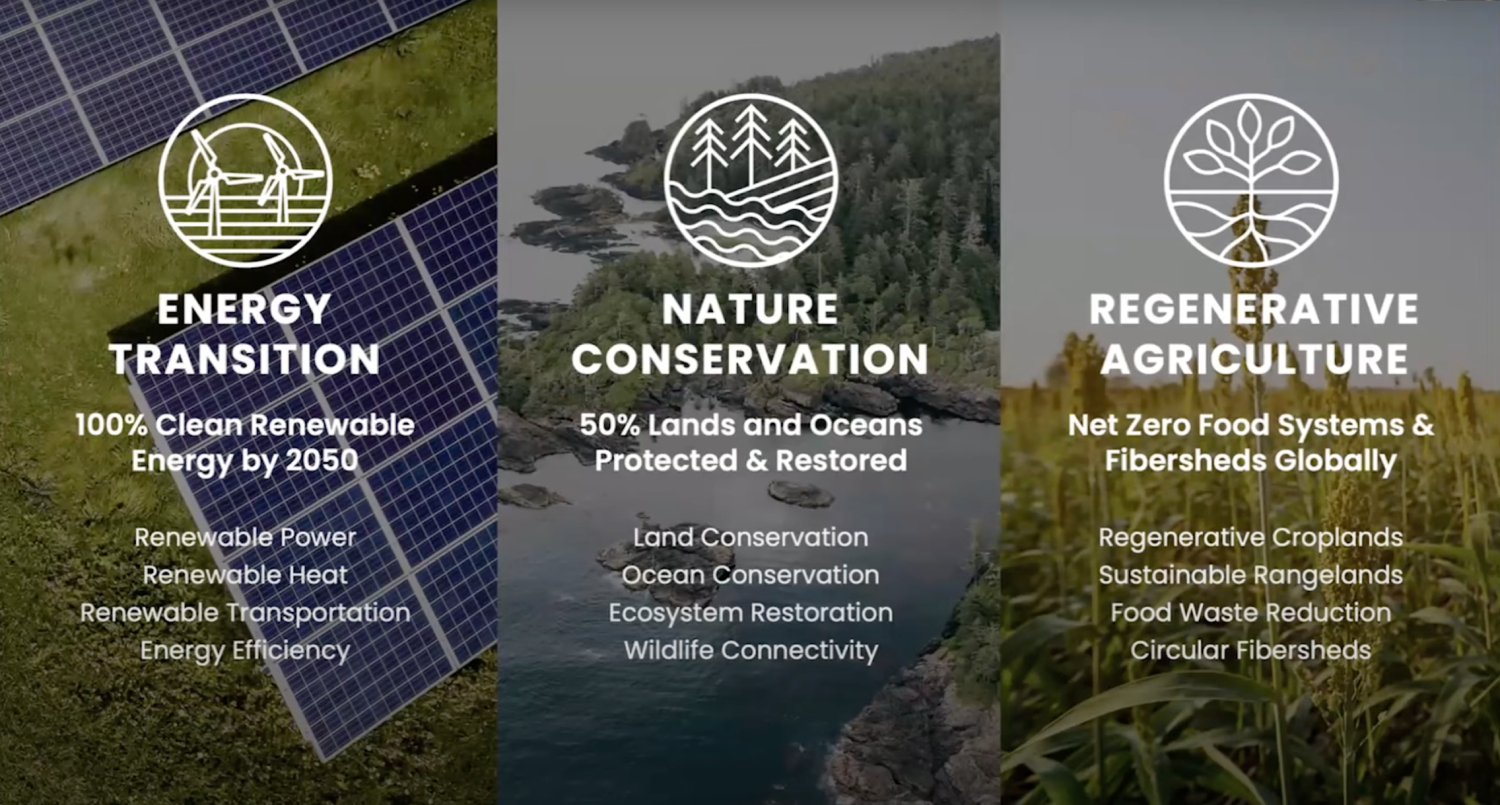
One Earth Climate Model's three pillars of collective action.
The One Earth Climate Model
Our first major scientific product was the One Earth Climate Model, led by the Aerospace Center (DLR) and the University of Technology Sydney. Originally published in 2019 by Springer Nature in Achieving the Paris Climate Agreement Goals—a dense, 500-page scientific text—the short answer is: Yes, it is still possible to achieve the 1.5°C goal. It won’t be easy, but it’s still possible.
More recently, about a year and a half ago, a second edition of the model was released, providing aligned targets usable for the financial sector.
We’ve boiled this science down into three key pillars that clarify what’s required:
- Transition to 100% clean, renewable energy.
- Protect, connect, and restore 50% of the world’s lands and oceans.
- Shift our food and fiber systems to regenerative agriculture.
Over the past few years, we’ve worked to make this science actionable and accessible to everyone, leading to the creation of the One Earth Solutions Framework.
At the top of the framework, you’ll see 70+ distinct solution pathways across three pillars and 12 broad categories. This section represents the “what”—what we need to get done, invest in, support, and scale.
At the bottom are intersectional themes and levers of change. This section represents the “how”—how we’re going to achieve these goals in a way that’s fair and equitable.
It’s important to note that all these solutions need to be addressed—there’s no silver bullet. But the good news is, if we do all of this, we can solve our greatest challenges and build a vibrant, healthy, and just future.
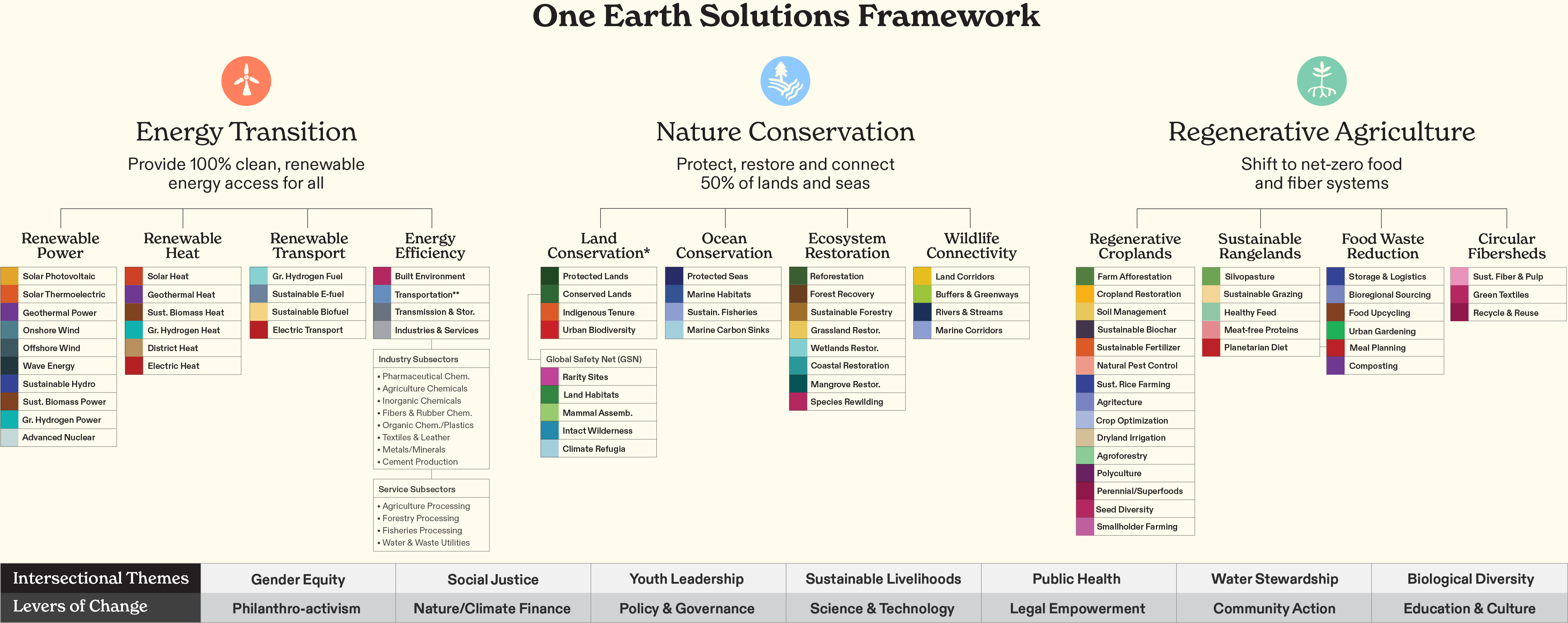
One Earth Solutions Framework
What makes the One Earth Solutions Framework unique?
While many solutions-oriented frameworks exist, this one stands out because:
- It’s based on a global climate model demonstrating how we can achieve the 1.5°C goal with existing solutions.
- It intentionally places nature and equity at the center of the proposition.
However, there’s a significant problem: We don’t know how much money—or what kind of money—is going to each area. Without strategic allocation, resources and time will be wasted.
To address this, we’ve partnered with Vibrant Data Labs (VDL), a social mission data science company. VDL created the US Climate Finance Tracker, a publicly available tool that tracks over $370 billion in funding to more than 10,000 climate-relevant companies and nonprofits over the past five years, sourced from over 14,000 investors and donors.
VDL uses data science to scrape and summarize descriptions, tag them with keywords, and make the data visually searchable. This allows anyone to easily see who’s funding what, identify gaps, and find opportunities for collaboration.
Earlier this year, we teamed up with VDL to apply the One Earth Solutions Framework to the Climate Finance Tracker, creating the first AI-enhanced climate solutions knowledge base and gap analysis tool for the financial sector.
Key insights from the data
At a high level, here’s what we’ve found so far:
- The majority of climate-relevant funding goes to energy and mobility technology—which is necessary but insufficient on its own.
- Philanthropy, while smaller overall, outpaces venture investments in nature-focused solutions by more than fivefold.
Nature is an area where market-based solutions may never fully emerge, making philanthropy critical to filling this gap.
Deep dive into nature funding
When breaking down philanthropy for nature conservation:
- 40% goes to already protected lands, which only cover 18% of the critical lands we need to conserve, protect, and restore.
- Less than 7% of nature philanthropy supports Indigenous land tenure, even though Indigenous Peoples steward at least one-third of critical lands.
- Less than half of nature-focused philanthropy explicitly mentions a social justice lens in their descriptions.
For donors, our enhanced Climate Finance Tracker will provide visibility into specific organizations and initiatives addressing these gaps, enabling strategic investments with meaningful impact.

What’s up next for One Earth?
In 2025, we plan to:
- Publish an updated One Earth Climate Model.
- Add impact scores for each solution pathway.
- Enhance the Climate Finance Tracker tool.
- Launch a dynamic, interactive report showcasing key gaps and opportunities for climate investors and philanthropists.
Our ultimate goal is to galvanize climate finance stakeholders to allocate resources more effectively, equitably, and swiftly.
All this information—including the Solutions Framework and inspiring stories of those driving change—is accessible on our website. We’ve worked hard to make this deep body of knowledge widely available.
Please visit our website, explore the resources, and don’t hesitate to reach out if you want to learn more about our ongoing projects.
Thank you so much!
Explore the Solutions Framework